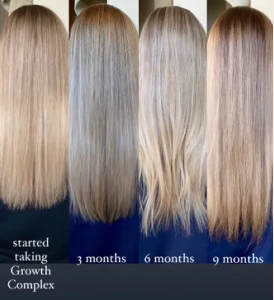There’s nothing more cold-hearted than how winter treats your hair. It’s rough, rude, and the worst part – fickle with its sometimes dry, sometimes (terribly) humid-cold temperatures.
It’s time to tell winter to, #quitplayinggameswithmyhair!


 We can’t count on the weather to have mercy on our hair, so the next best step: Protect your hair from cold-weather damage. There are plenty of ways to keep those lovely locks safe through flighty temperatures, whether the weather is warm one day and icy-cold the next.
We can’t count on the weather to have mercy on our hair, so the next best step: Protect your hair from cold-weather damage. There are plenty of ways to keep those lovely locks safe through flighty temperatures, whether the weather is warm one day and icy-cold the next.
Nix that cold-weather damage with these eight easy-to-implement steps in your hair care routine:
1. Lock in moisture (and stay hydrated!)
This goes for the inside and outside of your body. Be sure to use a leave-in conditioner each time you wash your hair to lock in hydration as it dries. Also, make sure you’re drinking at least 8, 8 oz cups of water per day, so your body stays hydrated and able to supply your hair with the H20 it needs!
2. Invest in a humidifier
Create your own tropical oasis inside any (or all) rooms! Infusing the air around you with water that not only nourishes and hydrates your skin and lungs – but your hair too! You can also benefit from aromatherapy when you add in a few drops of essential oils. Our favorites are peppermint, orange, lavender, and eucalyptus!
3. Wash your hair less often
You should only be washing your hair every three to four days to make sure it’s not getting dried out, or your scalp isn’t trying to produce an over-abundance of oil (which results in oily, greasy hair). By washing your hair less often, you’re allowing it to maintain its natural moisture barrier.
–>If you’re struggling with an oily scalp, try these great DIY dry shampoo recipes for every hair color!4. Skip the heat styling tools
Extreme heat plus your hair is never a great combination. High-heat temps from heat-styling tools like blow-dryers, curling and flat irons can actually damage the hair shaft, causing breakage and the need to cut away all that damaged hair. If you must use heat to style your hair, use a heat protectant, or cut back on the amount of time and number of days that you use them. There are plenty of heat-free hairstyles you can switch up with, like loose braids, or natural mermaid waves!
5. Brush regularly
Brushing out tangles on the regular is a good idea to avoid a mess of knots down the road. Be sure to use a leave-in conditioner or detangler before you brush, and go slowly and gently with a good-quality hairbrush to avoid breaking or yanking out any hair.
6. Go for regular trims
While it may seem counterintuitive for those of us wishing to grow out our hair, scheduling in regular trims helps our hair to grow healthier. Despite our best efforts to maintain our hair, ie., moisturizing, brushing, etc., it still gets damage and split ends from time to time. By trimming off those split ends and other damage, you’re negating a larger problem down the road… because once that damage starts, it will continue travelling up the hair shaft until you decide to cut it. :(
7. Wear silk scarves and hats
Material is huge when it comes to safeguarding your hair from winter damage. By wrapping your hair with a soft material like silk, or sheltering it with a hat, you’re actively blocking out any cold or freezing damage with a physical barrier. Plus, a little style in the winter months helps make the season all the more bearable! ;)
8. Avoid freezing damage
Do not, we repeat, do not walk outside with wet hair! You risk serious breakage if you do, as that water in your hair will freeze, expanding and blowing out your hair shaft – yikes! Make sure your hair is dry before you head outdoors (and don’t forget to seal in that hair shaft with a healthy hair oil), and do all you can to prevent those lovely locks from ‘catching a cold’ to maintain bounce, shine and beauty throughout the coldest winter weather!
–> Learn more on Tips to Avoid Frozen Hair (Tips)
Healthy hair, despite the weather
By taking the proper steps to protect your hair from cold weather damage, you can enjoy healthier, beautiful hair all year round!
Photo by Matthew T Rader on Unsplash



























